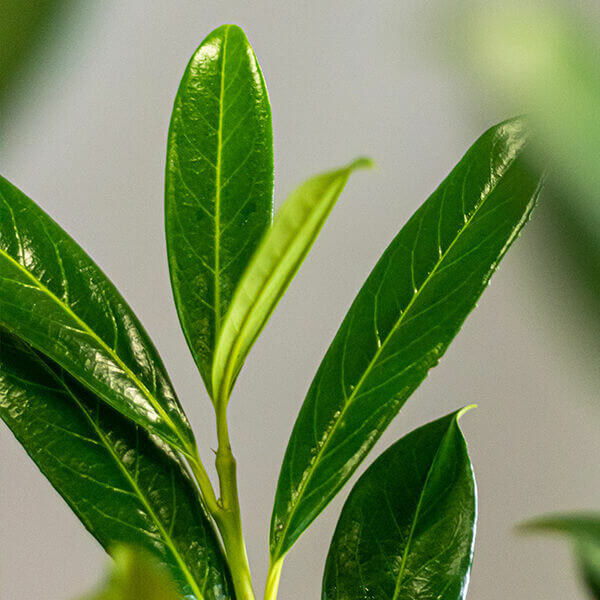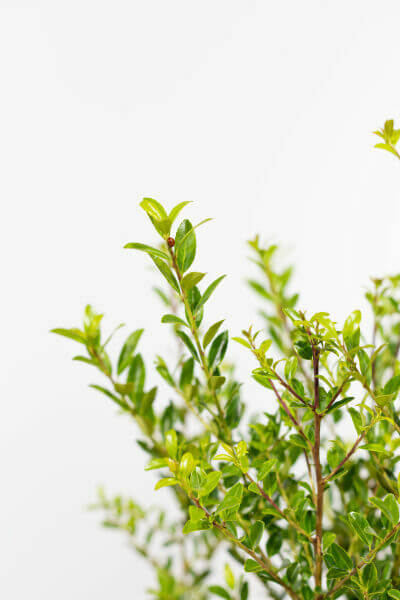Hedge Plants For Wildlife Corridors
Boost your garden's appeal with lush hedge ranges such as Yew (Taxus), Thuja, Laurel, Photinia, and Bamboo, celebrated for their structural stability and ecological benefits.
Yew and Thuja offer evergreen protection and winter durability, while Laurel uses quick growth and broad, fragrant leaves.
Photinia includes seasonal charm with its vibrant red foliage, and Bamboo lends a low-maintenance, tranquil atmosphere.
These hedges improve air quality, decrease noise, and produce tranquil, private spaces.
Appropriate planting, spacing, and maintenance guarantee energetic growth and eco-friendly consistency.
Explore how these lush ranges can raise your garden's beauty and wellness.
Key Takeaways
Change Your Garden With Lush Hedge Ranges
- Select Yew for its dense, evergreen development and unparalleled durability.
- Opt for Laurel for its fast growth and broad leaves, ensuring quick privacy.
- Choose Photinia for its vibrant seasonal foliage, which turns a striking dark red.
- Utilize Bamboo for a low-maintenance, winter-hardy hedge with visual appeal.
- Area plants 2-3 per meter and prune frequently for optimum development and health.
Popular Hedge Plants
When changing a garden with rich hedge varieties, it's essential to think about popular hedge plants such as Yew, Thuja, Laurel, and Photinia due to their distinct qualities and benefits.
Yew (Taxus) is highly respected for its durability and thick, green growth, making it a prime choice for sustaining landscapes.
Thuja is kept in mind for its evergreen foliage and robust winter season durability.
Photinia adds seasonal vibrancy with red leaves that darken with time, producing vibrant visual appeal.
Laurel uses rapid development and aromatic, broad leaves, suitable for quick personal privacy.
Furthermore, Bamboo is an outstanding choice for atmosphere, providing a low-maintenance, winter-hardy option that boosts the garden's visual with its stylish, swaying canes.
These choices deal with a variety of horticultural requirements and preferences.
Benefits of Garden Hedges
Garden hedges provide a wide variety of advantages, making them an important addition to any landscape. These natural barriers are economical to implement and supply considerable wind protection, improving air circulation and adding to noise reduction. The thick foliage of hedges like Thuja and Beech guarantees personal privacy by obstructing presence, producing a remote and peaceful environment.
Hedges likewise play an essential function in microclimate guideline, providing a stable environment that promotes plant development and decreases temperature level changes. Their detailed leaf structures filter contaminants, improving air quality and adding to a healthier garden environment.
Moreover, hedges stand out in noise decrease, taking in and deflecting acoustic waves to lower ambient noise levels. This double functionality of offering both visual and acoustic personal privacy enhances the general serenity and visual appeal of any garden.
Planting and Maintenance Tips
For an effective hedge, careful preparation of the planting area is important. Ensure the soil has proper pH and drainage to support strong root advancement.
Area the plants properly for the chosen species. Water the hedge often during its initial development stage, changing as required with seasonal changes.
Implement a methodical bug control and disease prevention technique, utilizing chemical or organic treatments when required. Frequently check for aphids, mites, and fungal infections.
Apply mulch to retain moisture and suppress weeds. Seasonal pruning promotes dense development and air blood circulation, necessary for plant health.
Following these guidelines will help you cultivate a vibrant, well-maintained hedge that improves the charm of your garden.
Spacing and Cutting Standards
Spacing and Trimming Guidelines
Proper spacing and trimming are essential for cultivating healthy, visually appealing hedges. Sufficient spacing guarantees each plant receives sufficient nutrients, light, and airflow.
Follow these guidelines for optimal hedge maintenance:
- Spacing: Position hedge plants 2-3 plants per meter to encourage robust growth.
- Pruning Techniques: Regular pruning is essential for maintaining wanted hedge height and shape. Trim new growth in summertime and cut down older wood throughout winter season.
- Seasonal Care: Change cutting schedules and techniques according to seasonal requirements to guarantee plant health.
- Hedge Height: Regularly monitor and cut to keep the preferred hedge height and achieve uniform visual appeals.
Complying with these actions will ensure your hedge thrives, enhancing both the appeal and performance of your garden.
Selecting the Right Hedge
Choosing the Right Hedge
Picking the suitable hedge involves evaluating aspects such as fully grown height, foliage density, and environmental strength. Successful hedge plant selection needs understanding each species' development attributes and site-specific adaptability.
For instance, Yew (Taxus) Additional info provides exceptional durability and dense development, while Thuja is notable for its winter season resilience. In addition, considering upkeep requirements is essential; fast-growing types like Laurel or Privet demand routine trimming, whereas low-maintenance alternatives like Bamboo or Ivy might be preferable for those looking for very little upkeep.
Environmental aspects such as soil type, light accessibility, and wetness conditions ought to likewise guide the choice procedure. This cautious approach guarantees the picked hedges will flourish, supplying both practical and visual benefits to the garden landscape.
Shipment and Planting Advice
To guarantee your hedge plants thrive, they ought to be provided by specialized couriers and planted quickly upon arrival.
Follow these vital actions for successful planting:
- Soil Preparation: Enhance the soil with raw material to enhance drainage and nutrient content.
- Planting Depth: Create a trench two times the width and equivalent to the depth of the root ball.
- Watering Strategies: Water thoroughly after planting, keeping the soil consistently damp however not filled.
- Mulching: Use a layer of mulch to retain moisture and suppress weeds.
Client Assistance and Service
Given the essential role of timely support in horticultural pursuits, our consumer assistance group is readily available six days a week through telephone, email, and social media to offer expert guidance and swiftly deal with any concerns. Their commitment to quick response times ensures customer complete satisfaction by dealing with inquiries associated with plant health, ideal planting approaches, and upkeep schedules.

Accessibility
-------------------
Within 24 hr
This extensive assistance system, enhanced by a stellar 9.3/ 10 customer score, highlights our dedication to improving the gardening experience for every single customer.
Regularly Asked Concerns
How Long Does It Take for Hedge Plants to Develop?
Hedge plants generally require one to three years to become completely developed, with the precise duration varying by species and growing conditions.
Efficient care during this crucial period is important for robust growth. Consistent watering, alert weed control, and proper fertilizer application are essential in promoting strong root advancement.
For instance, fast-growing species like Laurel may establish faster, while slower-growing varieties such as Yew might take longer. Diligent maintenance accelerates the establishment procedure, leading to thick and healthy hedges.
What Are the Best Hedge Plants for Privacy?
The concern of the very best hedge plants for privacy involves evaluating evergreen and deciduous alternatives.
Evergreen hedges like Thuja, Laurel, and Cypress supply year-round coverage, ensuring continuous privacy.
On the other hand, deciduous hedges such as Beech use seasonal privacy, shedding leaves in cooler months.
Secret maintenance pointers for personal privacy hedges include regular cutting, fertilizing in spring, and appropriate spacing-- generally 2 to 3 plants per meter.
Additionally, constant watering and diligent weed elimination are important for promoting healthy, thick growth.
Can Hedge Plants Bring In Wildlife to My Garden?
Yes, hedge plants can draw in wildlife to your garden by providing essential advantages like shelter, food, and nesting sites, therefore improving regional biodiversity. Yew, holly, and laurel are excellent for drawing in birds, while ivy supports a variety of bugs.
Nevertheless, it is very important to keep in mind that there are some disadvantages, such as increased upkeep to manage bugs and regular upkeep. Thoroughly selecting and preserving hedge varieties can help stabilize these downsides and benefits, ultimately cultivating a vibrant and sustainable environment in your garden.
Exist Any Blooming Hedge Plants Available?
Yes, there are flowering hedge plants offered that can boost the beauty of your garden.
For example, Elaeagnus, likewise called Olive Willow, produces fragrant white flowers in the fall, adding a touch of sophistication.
Photinia, another popular option, showcases vibrant red leaves that develop into an abundant green, developing a dynamic visual impact throughout the seasons.
To make sure these plants grow, it's important to practice appropriate pruning methods and seasonal upkeep, such as cutting new growth in the summer and cutting down in the winter season.
These procedures will assist keep the health and visual appeal of your flowering hedges.
How Do I Prevent Pests in My Hedge Plants?
To prevent pests in hedge plants, employ natural insect control techniques and preserve correct hedge care. Present beneficial insects like ladybugs, which prey on harmful pests, to create a balanced ecosystem.
Regularly check your hedges for indications of problem and without delay get rid of any affected parts to avoid the spread. Make sure the health of your hedges by using well balanced fertilizers and offering sufficient water.
Use mulching to retain soil moisture and correct spacing to lower plant tension and promote robust growth. These practices collectively help in decreasing bug problems and preserving a healthy hedge.
Conclusion
In essence, choosing the ideal hedge ranges such as Yew, Thuja, and Laurel can transform any garden into a tranquil sanctuary. These plants supply year-round greenery, enhance visual appeal, and deal useful benefits like sound reduction and wind security.
Appropriate planting techniques, precise spacing, constant watering, and seasonal trimming are essential for optimum growth.
Dependable delivery services and expert consumer support make sure a smooth experience from purchase to planting, making it simpler than ever to raise your outdoor area.
Garden hedges provide a multitude of advantages, making them a valuable addition to any landscape. These natural barriers are cost-efficient to execute and supply considerable wind protection, improving air circulation and contributing to sound decrease. The dense foliage of hedges like Thuja and Beech makes sure privacy by blocking visibility, developing a secluded and peaceful environment.

Pruning Methods: Regular pruning is essential for keeping preferred hedge height and shape. Trim brand-new growth in summer and cut back older wood throughout winter.